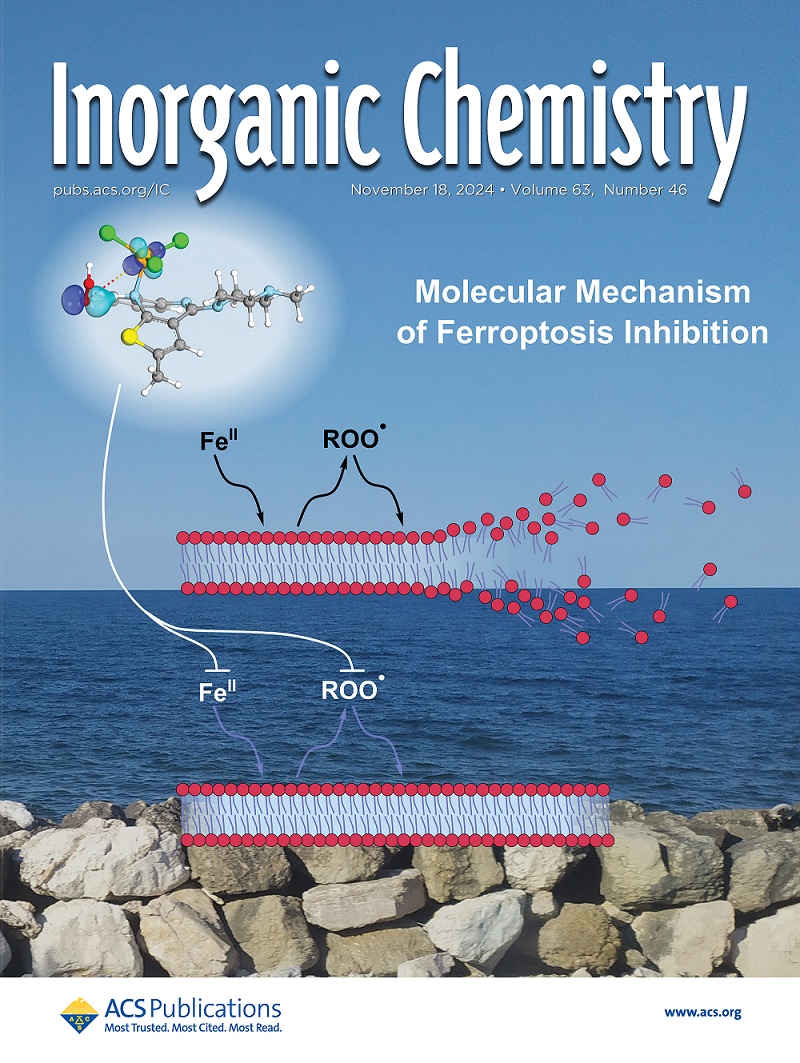疏水B(C6F5)3@R4-MIL-101:受挫刘易斯对介导的还原胺化的耐水非均相催化剂
IF 4.3
2区 化学
Q1 CHEMISTRY, INORGANIC & NUCLEAR
引用次数: 0
摘要
B(C6F5)3基受挫刘易斯对(FLPs)在无金属催化还原方面取得了显著进展。然而,B(C6F5)3对氧的高亲和力使其暴露于H2O时易发生不可逆中毒,限制了其在还原性胺化中的广泛应用。为了克服水的影响,将B(C6F5)3包裹在烷基链修饰的金属有机骨架(mof)纳米笼内,制备了疏水催化剂B(C6F5)3@Rn -1-MIL-101 (n = 3,5,7)。通过改变烷基链的长度可以调节催化剂的疏水强度。在n = 3时,烷基链过短而不疏水,而在n = 7时,烷基链过长阻塞了孔通道,对B(C6F5)3的负载产生不利影响。只有在n = 5条件下合成的B(C6F5)3@R4-MIL-101催化剂才能在“湿溶剂”中有效促进醛或酮与胺的还原胺化反应。将疏水mof与B(C6F5)3相结合制备多相FLP催化剂,不仅为研究还原性胺化反应的催化体系提供了新的途径,而且代表了推进FLP化学的创新途径。本文章由计算机程序翻译,如有差异,请以英文原文为准。

Hydrophobic B(C6F5)3@R4-MIL-101: A Water-Resistant Heterogeneous Catalyst for Frustrated Lewis Pairs-Mediated Reductive Amination
B(C6F5)3-based frustrated Lewis pairs (FLPs) have made remarkable progress in metal-free catalytic reduction. However, the high affinity of B(C6F5)3 for oxygen makes it susceptible to irreversible poisoning when exposed to H2O, limiting its widespread application in reductive amination. To overcome the influence of H2O, a hydrophobic catalyst, B(C6F5)3@Rn–1-MIL-101 (n = 3, 5, 7), was developed by confining B(C6F5)3 within the nanocages of metal–organic frameworks (MOFs) modified with alkyl chains. The hydrophobic strength of the catalyst could be adjusted by varying the length of the alkyl chain. At n = 3, the alkyl chain was too short to be hydrophobic, while the excessively long alkyl chain blocked the pore channels and adversely affected the loading of B(C6F5)3 at n = 7. Only the catalyst B(C6F5)3@R4-MIL-101 synthesized at n = 5 could effectively facilitate the reductive amination of aldehydes or ketones with amines in a “wet solvent.” The strategy of combining hydrophobic MOFs with B(C6F5)3 to prepare heterogeneous catalysts for FLP catalysis not only provides a fresh avenue for investigating catalytic systems for reductive amination but also represents an innovative approach to advancing FLP chemistry.
求助全文
通过发布文献求助,成功后即可免费获取论文全文。
去求助
来源期刊

Inorganic Chemistry
化学-无机化学与核化学
CiteScore
7.60
自引率
13.00%
发文量
1960
审稿时长
1.9 months
期刊介绍:
Inorganic Chemistry publishes fundamental studies in all phases of inorganic chemistry. Coverage includes experimental and theoretical reports on quantitative studies of structure and thermodynamics, kinetics, mechanisms of inorganic reactions, bioinorganic chemistry, and relevant aspects of organometallic chemistry, solid-state phenomena, and chemical bonding theory. Emphasis is placed on the synthesis, structure, thermodynamics, reactivity, spectroscopy, and bonding properties of significant new and known compounds.
 求助内容:
求助内容: 应助结果提醒方式:
应助结果提醒方式:


